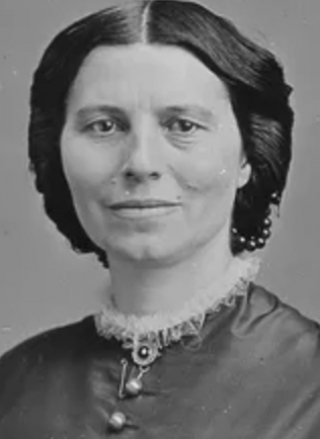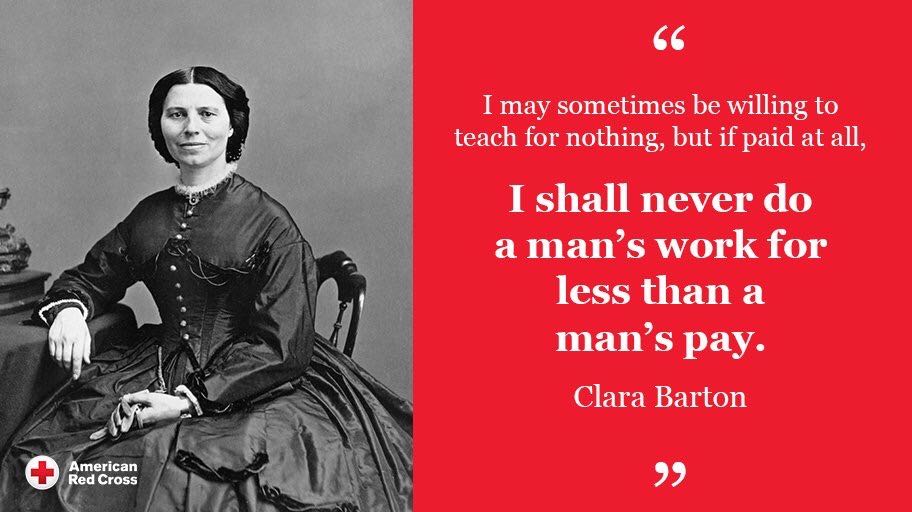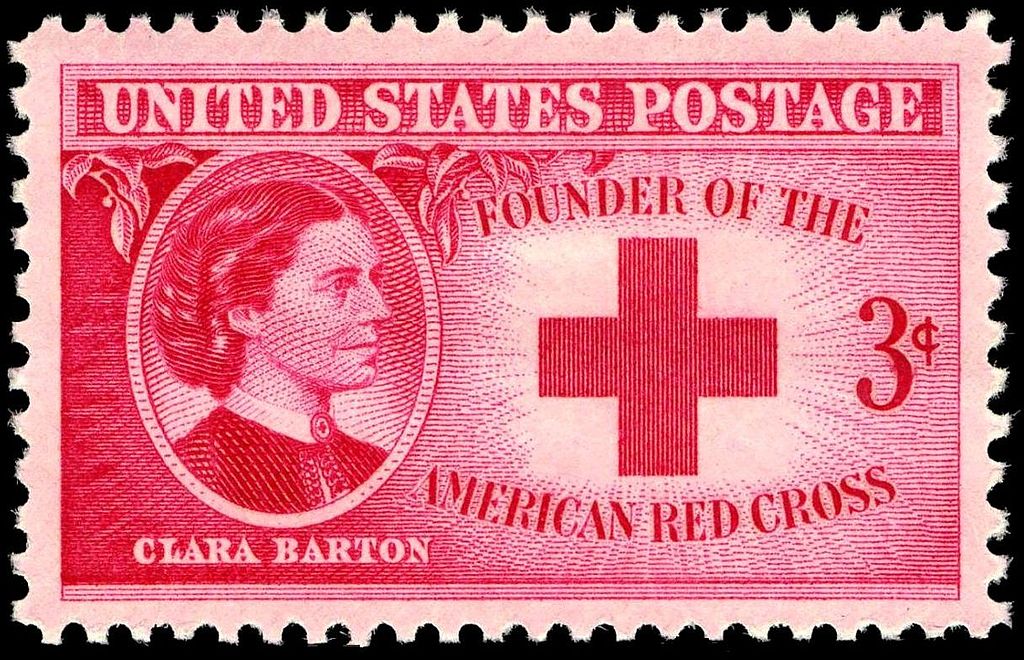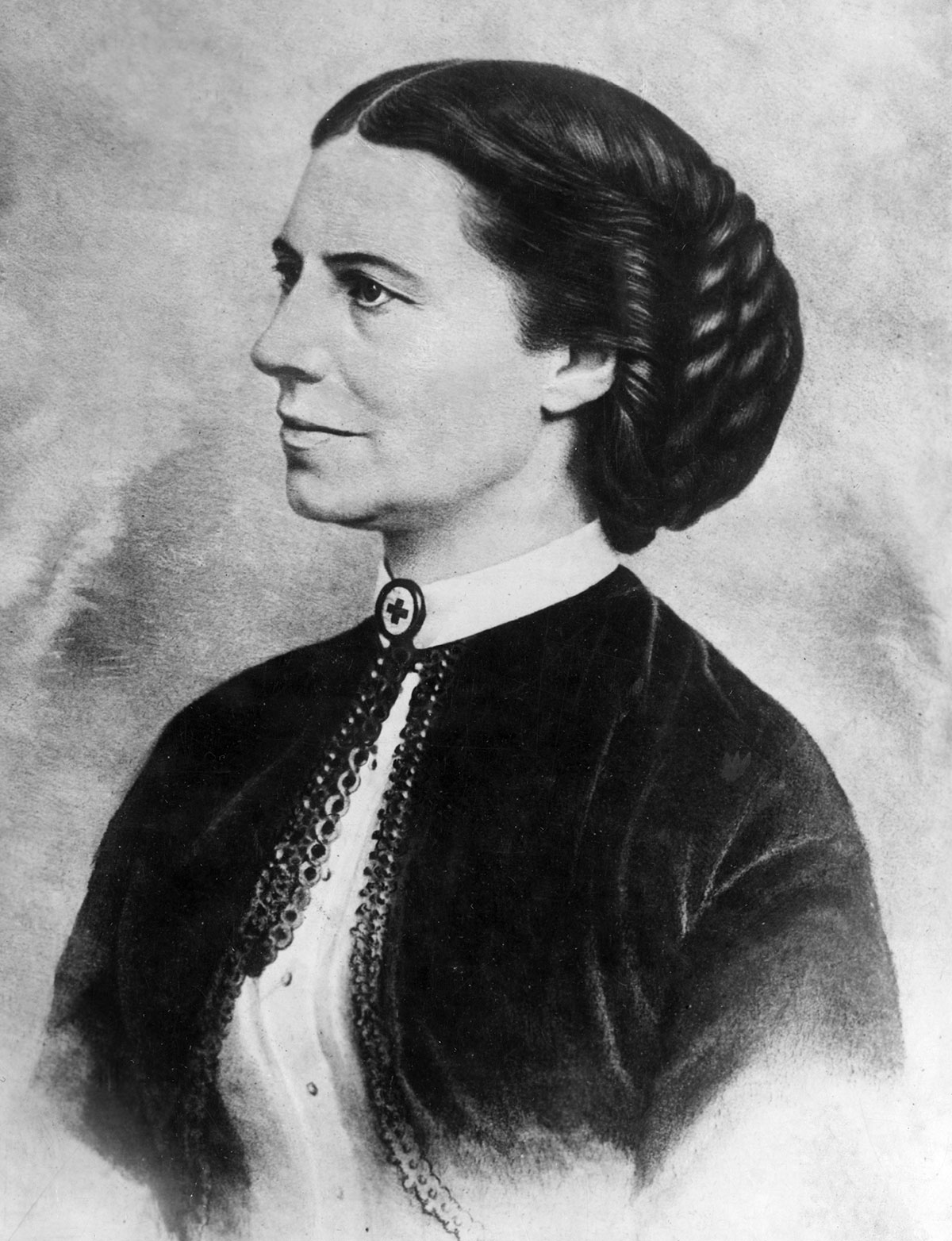Clara Barton & the Red Cross
Early in her career, Clara Barton was a teacher and promoted public education in her area. During the Civil Wart, Barton, living in Washington DC at the time, began nursing wounded soldiers returning from battle.
According to Wikipedia, “Barton, along with several other women, personally provided clothing, food, and supplies for the sick and wounded soldiers. She learned how to store and distribute medical supplies and offered emotional support to the soldiers by keeping their spirits high. She would read books to them, write letters to their families for them, talk to them, and support them.
It was on that day that she identified herself with army work and began her efforts towards collecting medical supplies for the Union soldiers. Prior to distributing provisions directly onto the battlefield and gaining further support, Barton used her own living quarters as a storeroom and distributed supplies with the help of a few friends in early 1862, despite opposition in the War Department and among field surgeons.[2] Ladies’ Aid societies helped in sending bandages, food, and clothing that would later be distributed during the Civil War. In August 1862, Barton finally gained permission from Quartermaster Daniel Rucker to work on the front lines. She gained support from other people who believed in her cause.
After the First Battle of Bull Run, Barton placed an ad in a Massachusetts newspaper for supplies; the response was a profound influx of supplies.[15] She worked to distribute stores, clean field hospitals, apply dressings, and serve food to wounded soldiers in close proximity to several battles, including Cedar Mountain, Second Bull Run, Antietam, and Fredericksburg.
In 1864, she was appointed by Union General Benjamin Butler as the “lady in charge” of the hospitals at the front of the Army of the James. She was known as the “Angel of the Battlefield”
After the war, she ran the Office of Missing Soldiers, at 437 ½ Seventh Street, Northwest, Washington, D.C. in the Gallery Place neighborhood.[22] The office’s purpose was to find or identify soldiers killed or missing in action.[23] Barton and her assistants wrote 41,855 replies to inquiries and helped locate more than twenty-two thousand missing men. Barton spent the summer of 1865 helping find, identify, and properly bury 13,000 individuals who died in Andersonville prison camp, a Confederate prisoner-of-war camp in Georgia.[24] She continued this task over the next four years, burying 20,000 more Union soldiers and marking their graves.
Barton achieved widespread recognition by delivering lectures around the country about her war experiences in 1865–1868. During this time she met Susan B. Anthony and began an association with the woman’s suffrage movement.
She closed the Missing Soldiers Office in 1868 and traveled to Europe. In 1869, during her trip to Geneva, Switzerland, Barton was introduced to the Red Cross and Dr. Appia; he later would invite her to be the representative for the American branch of the Red Cross and help her find financial benefactors for the start of the American Red Cross. She was also introduced to Henry Dunant‘s book A Memory of Solferino, which called for the formation of national societies to provide relief voluntarily on a neutral basis.
Back in the United States, she inaugurated a movement to gain recognition for the International Committee of the Red Cross (ICRC) by the United States government. Barton succeeded during the administration of President Chester Arthur, using the argument that the new American Red Cross could respond to crises other than war such as natural disasters like earthquakes, forest fires, and hurricanes.
Barton became President of the American branch of the society, which held its first official meeting at her I Street apartment in Washington, DC, May 21, 1881. The first local society was founded August 22, 1881 in Dansville, Livingston County, New York, where she maintained a country home
Domestically in 1884 she helped in the floods on the Ohio River, provided Texas with food and supplies during the famine of 1887 and took workers to Illinois in 1888 after a tornado and that same year to Florida for the yellow fever epidemic.[31] Within days after the Johnstown Flood in 1889, she led her delegation of 50 doctors and nurses in response.
Barton’s last field operation as President of the American Red Cross was helping victims of the Galveston hurricane in 1900. The operation established an orphanage for children.”




